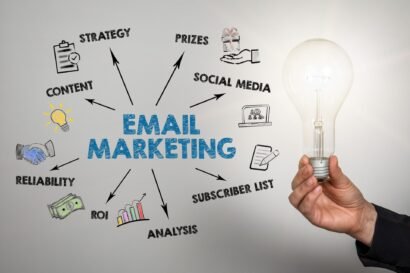Marketing for Small businesses
Marketing is an essential component of any successful business, but it can be particularly challenging for small businesses with limited budgets and resources. In this pillar page, we will explore various marketing strategies that small businesses can utilise to increase their visibility, reach, and profitability. From developing a comprehensive marketing plan to leveraging social media and search engine optimization (SEO), we will provide actionable tips and insights to help small businesses succeed in today’s competitive marketplace.
Who is my customer
Understanding who your customer is is crucial to developing an effective marketing strategy. By understanding their needs, wants, pain points, and behaviours, you can create targeted messaging and tactics that will resonate with them and increase your chances of converting them into customers.
Here are some steps to help you understand your customer:
- Conduct market research: Conducting market research is a great way to gain insights into your target audience. This can include surveys, focus groups, and interviews with your existing customers or potential customers. You can also gather information through social media monitoring, online reviews, and competitor analysis.
- Develop buyer personas: Once you have gathered data on your target audience, you can develop buyer personas. A buyer persona is a fictional representation of your ideal customer. It includes demographic information, behaviours, motivations, and pain points. By creating buyer personas, you can tailor your marketing messages and tactics to better resonate with your target audience.
- Use analytics tools: Analytics tools can help you track your website traffic, social media engagement, and other metrics. By analysing this data, you can gain insights into your customer’s behaviours, preferences, and needs. This can help you make data-driven decisions about your marketing strategy.
- Monitor feedback: Pay attention to feedback from your customers. This can include customer reviews, surveys, and feedback forms. By listening to your customers, you can identify areas for improvement and make adjustments to your marketing strategy as needed.
Understanding your customer is an ongoing process. As your business grows and evolves, your target audience may also change. It’s important to continuously gather data, analyse it, and adjust your marketing strategy accordingly.
Strong Value propositions
Creating a strong value proposition is crucial to attracting and retaining customers. Your value proposition should clearly communicate the unique benefits that your products or services provide to your target audience. Here are some steps to help you create the best value proposition for your audience:
- Identify your target audience: The first step in creating a strong value proposition is to identify your target audience. Who are your ideal customers? What are their needs, wants, and pain points? By understanding your target audience, you can tailor your value proposition to better resonate with them.
- Identify your unique selling proposition: Your unique selling proposition (USP) is what sets your business apart from your competitors. What unique benefits do your products or services provide to your customers? What makes them different from what is already available in the market? Identifying your USP is critical to creating a strong value proposition.
- Highlight the benefits: Your value proposition should clearly communicate the benefits that your products or services provide to your customers. This can include cost savings, time savings, convenience, quality, or any other benefits that are relevant to your target audience. Make sure to highlight these benefits in your value proposition.
- Keep it simple and concise: Your value proposition should be simple and easy to understand. Avoid using technical jargon or complex language that might confuse your audience. Keep it concise, ideally no longer than one or two sentences.
- Test and iterate: Once you have created your value proposition, test it with your target audience to see how they respond. Use customer feedback to refine and improve your value proposition over time.
Creating a strong value proposition takes time and effort, but it can have a significant impact on your business’s success. By clearly communicating the benefits that your products or services provide to your target audience, you can differentiate your business and attract more customers.
Developing a Marketing Plan
The first step in any successful marketing campaign is to develop a comprehensive marketing plan. A marketing plan is a roadmap that outlines your marketing goals, target audience, key messages, and tactics for achieving those goals. Some key elements to consider when developing a marketing plan for a small business include:
- Identifying Your Target Audience: Understanding your target audience is critical to developing an effective marketing plan. Who are your ideal customers? What are their needs, wants, and pain points? What motivates them to make a purchase? By answering these questions, you can tailor your marketing messages and tactics to better resonate with your target audience.
- Setting Clear Marketing Goals: Your marketing goals should be specific, measurable, achievable, relevant, and time-bound (SMART). Do you want to increase website traffic, generate more leads, or boost sales? Setting clear goals will help you track your progress and determine the success of your marketing campaigns.
- Defining Your Unique Value Proposition: Your unique value proposition (UVP) is what sets your business apart from your competitors. It should clearly communicate the unique benefits that your products or services provide to your customers. Your UVP should be incorporated into all of your marketing messages to help differentiate your business and attract customers.
Leveraging Social Media Marketing
Social media marketing is an effective way for small businesses to reach a wider audience and engage with their customers. Some tips for leveraging social media for small business marketing include:
- Choosing the Right Platforms: Not all social media platforms are created equal, and it’s important to choose the ones that are most relevant to your target audience. Facebook, Twitter, Instagram, and LinkedIn are some of the most popular social media platforms for small business marketing.
- Creating Engaging Content: The key to success on social media is to create content that is informative, entertaining, and engaging. Use high-quality images, videos, and infographics to grab your audience’s attention and keep them engaged.
- Engaging with Your Audience: Social media is a two-way conversation, and it’s important to engage with your audience by responding to comments, answering questions, and addressing any concerns they may have. This will help build trust and loyalty among your followers.
Optimising for Search Engines
Search engine optimization (SEO) is the process of optimising your website and content to improve your visibility in search engine results pages (SERPs). Here are some tips for small businesses looking to improve their SEO:
- Conducting Keyword Research: Keyword research is the process of identifying the search terms that your target audience is using to find businesses like yours. By incorporating these keywords into your website and content, you can improve your visibility in SERPs.
- Optimising Your Website: Your website should be optimised for both search engines and users. This includes using descriptive page titles, meta descriptions, header tags, and optimising your website’s speed and mobile-friendliness.
- Building Backlinks: Backlinks are links from other websites that point to your website. They are an important ranking factor in SEO and can help improve your visibility in search results. Some strategies for building backlinks include guest blogging, creating shareable content, and engaging with other websites in your industry.
Marketing is an ongoing process, and small businesses need to continuously evaluate their marketing efforts
From leads to happy customers
Converting leads into happy customers is the ultimate goal of any business. Here are some strategies to help you convert leads into happy customers:
- Personalise your communications: Personalised communication can help you build a relationship with your leads and make them feel valued. Use their name, reference their specific needs or interests, and tailor your messaging to their stage in the buying journey.
- Provide value: Provide value to your leads by sharing helpful resources, providing expert advice, or offering free trials or samples. This can help build trust and establish your business as a trusted source of information.
- Address concerns: Address any concerns or objections your leads may have about your products or services. Listen to their concerns and provide clear, honest answers. This can help alleviate any doubts they may have and increase their confidence in your business.
- Follow up consistently: Consistent follow-up is key to converting leads into customers. Use a CRM system to track leads and set reminders for follow-up activities such as emails, phone calls, or in-person meetings. Be persistent but not pushy, and focus on providing value and building a relationship with your leads.
- Provide excellent customer service: Providing excellent customer service is critical to converting leads into happy customers. Respond to inquiries promptly, be friendly and helpful, and go above and beyond to address any issues or concerns your customers may have. This can help turn them into loyal, repeat customers.
- Measure your results: Measure your results and track your conversion rates to identify what is working and what isn’t. Use this data to refine and improve your lead conversion strategy over time.
By personalising your communications, providing value, addressing concerns, following up consistently, providing excellent customer service, and measuring your results, you can convert more leads into happy customers and build a loyal customer base for your business.

Ecommerce Email Marketing: Strategies for Effective Campaigns

Why You Should Use Threads to Market Your Small Business

Mastering the Art of eCommerce Content Marketing

Navigating the Storm: 7 Ways Startups Thrive Amid Volatility and Uncertainty

Choosing the Right Social Media Platform for Your Business: A Comprehensive Guide

Pinterest isn’t just for Weddings! 10 Proven Steps to Skyrocket Your Business with Pinterest

The Significance of Product and Service Reliability in Enhancing Customer Contentment

Churn Analysis: Identifying Red Flags and Preventing Attrition

The Power of Employee Training: 5 Ways it Boosts Customer Satisfaction

Personalization and Customization: Tailoring Experiences for Satisfaction

Customer Retention Metrics: 10 Key Indicators and Tracking Success

Measuring Customer Satisfaction: 7 Powerful Strategies and Metrics

Loyalty Programs: 5 Proven Strategies for Long-Term Customer Retention

5 Effective Communication Strategies to Retain Customers

The economics of Customer Retention: 7 Ways it Boosts Your Bottom Line

Building Trust and Credibility for Long-Term Customer Loyalty

5 Best Practices for Exceptional Customer Service

Social Media Marketing Mistakes. 10 Common Mistakes to Avoid

Ecommerce Shipping and Fulfillment: 10 Strategies for Efficiency and Customer Satisfaction

7 ways to Measure Social Media Success effectively. KPI’s for Your Social Media Marketing Campaigns

Unlocking Success: 7 Essential Market Research Tools and Approaches

The Power of Market Research: Unveiling the Secrets of Success

On-Page SEO vs. Off-Page SEO: Unraveling the Digital Marketing Puzzle

Building Credibility and Trust Through Effective Communication

10 Common Mistakes to Avoid in Social Media Marketing

Organic vs. Paid Social Media Marketing: Choosing the Best Strategy for Your Brand

The Ultimate Guide: Should I Consider Online Sales or Brick-and-Mortar Retail, or Both?

Amazon KDP. How to Publish Your Own Ebooks. A Comprehensive Guide

Unlocking the Power of SERPs: 7 Ways They Impact Your Business

The Power of Lead Magnets: A Comprehensive Guide to Creation and Utilization

7 Key Marketing Objectives for Success in the Digital Age

The Power of Social Media Marketing: 10 Strategies for Success

5 Emerging Trends in Social Media Marketing




































